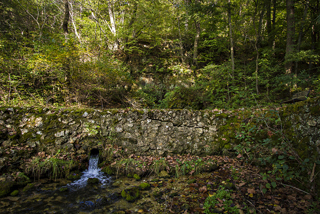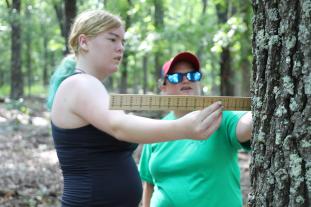Wurdack Extension and Education Center
Nestled along the Meramec River near Cook Station in the northeast Ozarks, this Center conducts demonstrations and research in integrated livestock, forages, forestry, agroforestry and wildlife management practices that are economically viable, environmentally sound and sociologically acceptable for the Ozark Region of Missouri. Timber covers most of the acreage, while 260 acres provide the base for forage production, rotational grazing and cattle production. Current research includes programs to improve forage, beef, agroforestry and timber.
The Hugo Wurdack Research Center conducts demonstrations and research in integrated livestock, forages, forestry and wildlife management practices that are economically viable, environmentally sound and sociologically acceptable for the Ozark Region of Missouri. Wurdack is operated using Best Management Practices and provides educational information on a wide range of agricultural, natural resource and scientific topics to area beef and forage producers, soil and water district members, students from elementary and secondary schools, and other interested groups. Farm activities emphasize management practices that promote sustainable agricultural production while protecting the natural environment and the quality of life for citizens of Missouri’s Ozark region. Learn about our Advisory Committee.

Facilities
Nestled along the Meramec River near Cook Station in the northeast Ozarks, the farm is comprised of some 1,200 acres; 260 acres of pastures and forage production fields, and the remaining acreage of predominantly upland hardwood forest. Two ponds, two live springs and the boundary with the Meramec River are unique components of the farm.
Constructed in 2000, the Education Building hosts demonstrations, seminars and workshops throughout the year. The completely handicap-accessible building also houses the farm office and boasts a complete kitchen and sleeping quarters for visiting research and extension personnel.
In addition to the Education Building, there are two clusters of outbuildings on the farm. As you enter the farm’s valley there is the farm manager’s residence, main barn and equipment shed.
Further up the river valley lays the cattle working facility where the bulk of the farm’s livestock breeding and calving is performed, and the hay barn.
While visitors are always welcome, the best way to see the entire farm is to attend the annual Fall Field Day held the first Friday in October. Come enjoy lunch and then spend the afternoon taking in the beautiful fall colors as wagon tours roll through the farm showcasing innovative farm and natural resource management practices.
History
The farm was acquired by the University of Missouri in 1962 and was managed for approximately 25 years by various university personnel and departments. In 1986, management of the farm was shifted from Animal Sciences to a Management Committee comprised of area extension and state extension/research faculties. A producer advisory committee was formed to review the forage, livestock and natural resources components of the farm enterprise and helps guide the Management Committee in its charge to direct the demonstration, extension education and research functions of the Hugo Wurdack Research Center. Since that time, facilities have been upgraded and substantial education, demonstration and research programs initiated for the citizens of the Meramec Extension Area. The key to success of the farm has been the degree of cooperation and support between area extension specialists, state extension/research specialists and community leaders.

Help us grow

All farm centers





